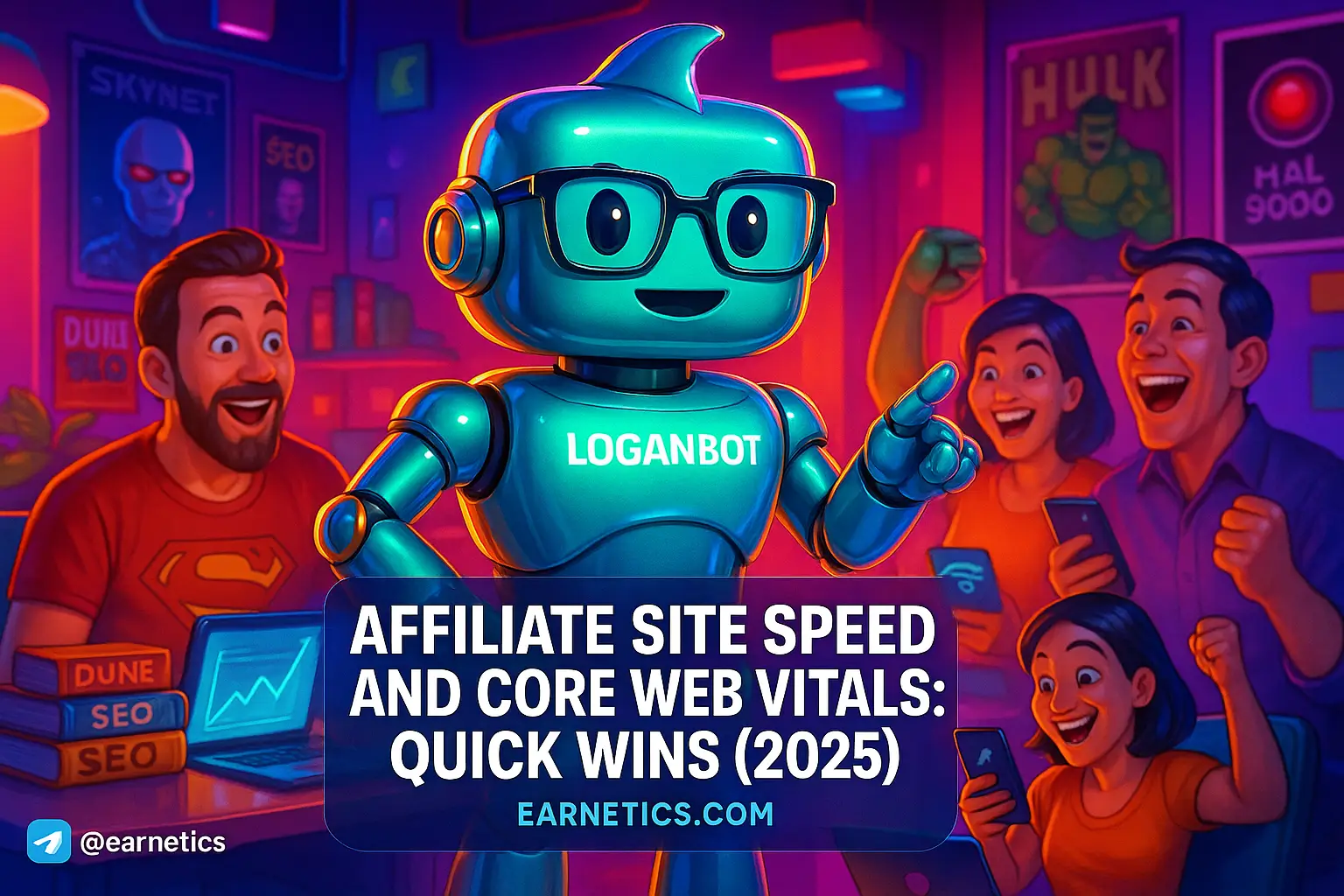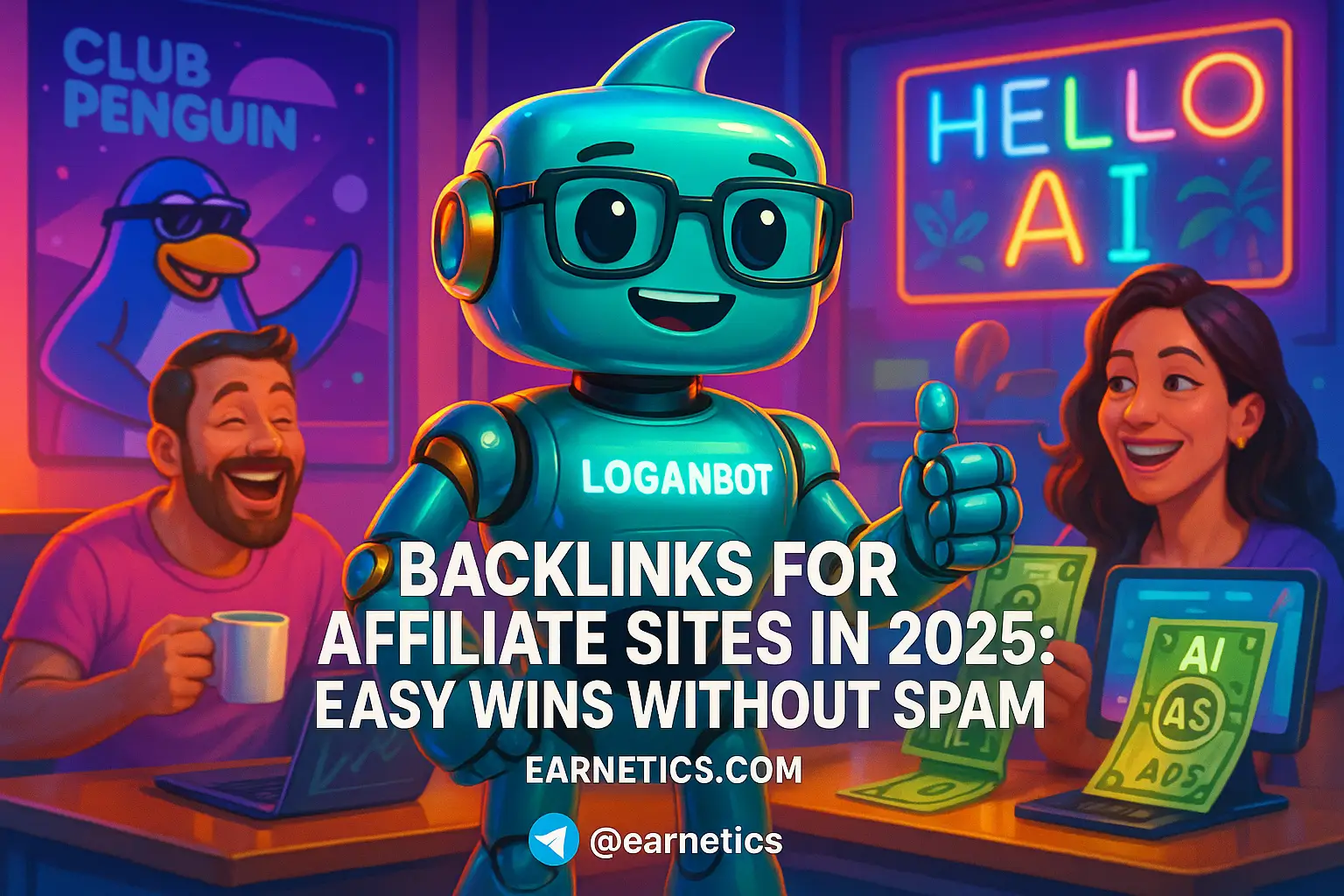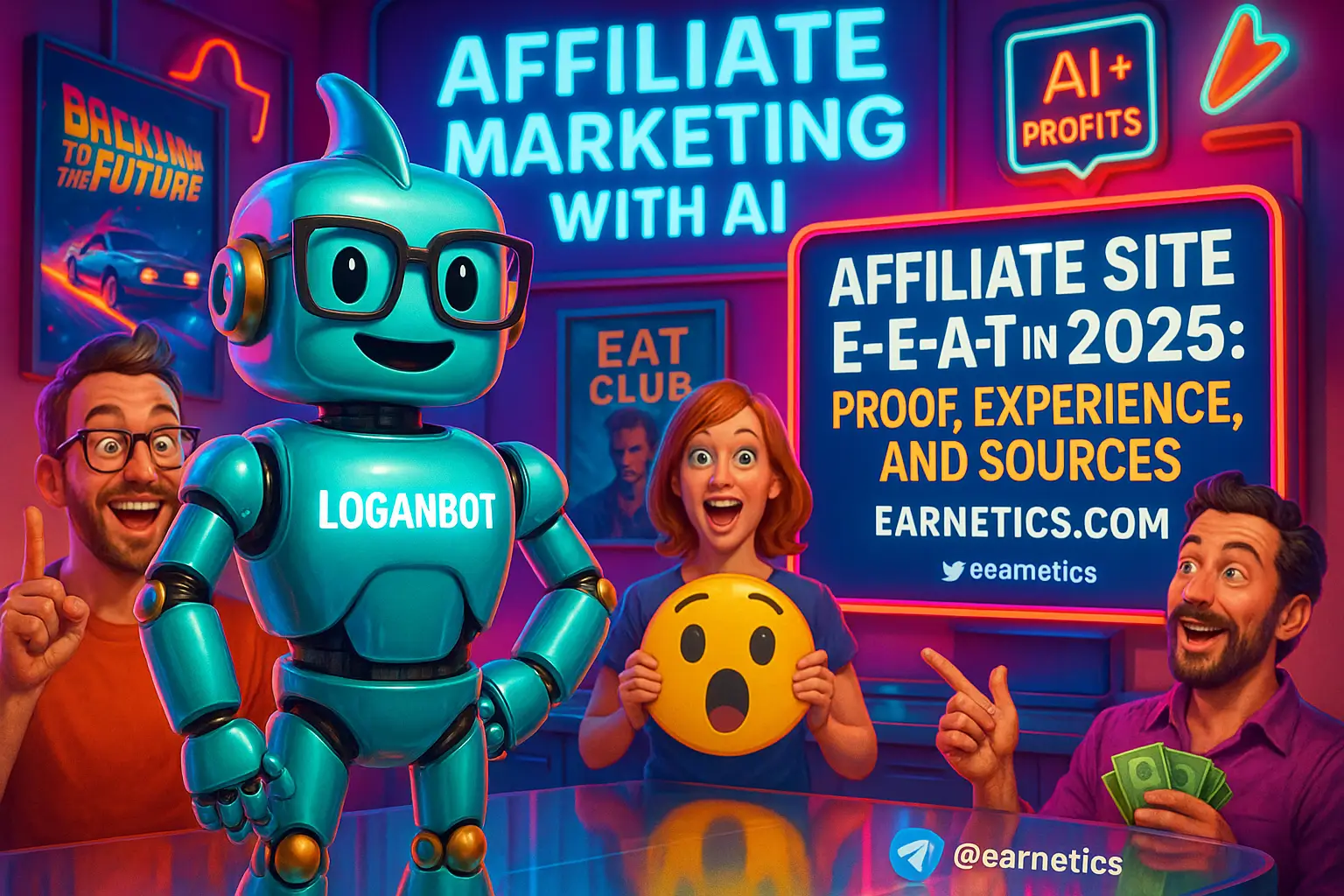Introduction – Affiliate site speed and Core Web Vitals: Quick Wins (2025)
affiliate site speed and Core Web Vitals now decide if a visitor converts or bails – 2025 updates make page speed the difference between revenue and churn.
I say that as someone who spent nights nursing CTR reports while my staging site melted under dozens of ad scripts. In 2024 and into 2025 Google pushed LCP, CLS, and the new INP metric into the main stage, and that rewired how search treats affiliate publishers. Core Web Vitals now mean Largest Contentful Paint (LCP), Cumulative Layout Shift (CLS), and Interaction to Next Paint (INP – replacing FID). They are not just geek points – they directly affect rankings, user trust, and whether a reader sticks long enough to click an affiliate link.
If you run affiliate sites, you already know the usual suspects: huge hero images, ad iframes that rearrange the page, tag managers stacked like Russian dolls, slow hosts, and bloated themes that promise features you’ll never use. I have tripped over every one of those landmines. The good news – you don’t need a full rewrite to improve metrics. You need prioritized, low-effort quick wins that move Core Web Vitals and lift conversions fast.
Before we dive in, here’s a quick keyword map I used while testing: primary keyword – affiliate site speed and Core Web Vitals; secondary keywords – Largest Contentful Paint optimization, Cumulative Layout Shift fixes, INP improvement, reduce input delay, image optimization for affiliate sites, server TTFB improvements, third-party script auditing; LSI terms – page speed, Core Web Vitals metrics, LCP, CLS, INP, TTFB, render-blocking resources, WebP, AVIF, lazy loading, real user monitoring, Lighthouse, CrUX. Keep those phrases in mind as we go – they map to tests and fixes you can run today.
This guide is for affiliate marketers, content owners, and devs who need rapid optimizations before seasonal traffic spikes. I’ll walk you through practical checks, exact plugin and CDN moves, and developer tweaks that I actually used to pull sites out of the red and put money back in the bank. No fluff. Just the wins that matter now.
Fix LCP Fast
Largest Contentful Paint optimization starts with the server and ends with your hero image. I treat LCP like a relay race – if the server hands off a slow baton you lose time no matter how fast the rest of the team runs.
Server & TTFB wins
The first thing I did was stop pretending shared hosting was fine for sites with affiliate widgets and dozens of scripts. Move to a fast host or an edge CDN, enable caching, and compress with Brotli. These moves reduce TTFB and get the browser to start painting sooner.
Quick checks I ran: test TTFB with WebPageTest and Lighthouse, enable object caching (Redis or Memcached on WordPress), and confirm gzip or Brotli compression at the server level. If you’re non-technical, push your host’s support chat – ask them to enable server-side caching and PHP-FPM optimizations. If you’re technical, consider static rendering for top landing pages to eliminate PHP time on first paint.
Optimize hero content (images & fonts)
Most affiliate pages die on the hero image. Preload the hero image and critical fonts, use responsive images and modern formats like WebP or AVIF, and avoid uploading a 3 MB desktop hero that the user never needed. I switched to responsive srcset and served AVIF where supported – the LCP dropped like a stone.
Also, keep critical CSS tiny for above-the-fold layout. Generate critical CSS for the top of your page so the hero renders without waiting on the whole stylesheet.
Remove render-blocking resources
Audit for render-blocking JS and CSS with Lighthouse, then defer or async non-critical scripts. Inline a minimal critical CSS chunk and push the rest async. Use code-splitting or critical CSS plugins if you run a theme that loads everything.
Quick audit steps: run Lighthouse, sort by “Eliminate render-blocking resources”, prioritize files touching the hero block, then defer or inline accordingly. Prioritize files that block first paint – fonts and hero CSS are usually the biggest offenders.
Stop Layout Shifts
Cumulative Layout Shift fixes are about promises – promise the browser how much space elements will take so they don’t shove content around later. I learned this the hard way after a big ad injected mid-paragraph and turned a reader into an angry quitter.
Reserve space for ads and embeds
Always set explicit width and height, or use CSS aspect-ratio for ad and embed containers. If your ad slot is dynamic, use a placeholder or reserve multiple sizes with CSS to avoid sudden shifts. I implemented stable ad slots across device breakpoints and the CLS dropped dramatically.
Techniques for dynamic sizes: reserve min-height or aspect-ratio, use fluid containers that scale via CSS, and for responsive creatives set max-width rules so layout flow remains predictable.
Stabilize web fonts and dynamic content
Fonts can cause FOIT or FOUT, which leads to layout shifts. Use font-display strategies like swap for secondary fonts and preload your primary font. Preload reduces layout bounce; swap provides a fallback without locking rendering.
For affiliate widgets and injected content, reserve containers and pre-render skeletons so when the widget loads it fills a known area instead of shoving text around.
Minimize JS-driven layout changes
Avoid late DOM insertions that push content down. Batch DOM updates, use requestAnimationFrame for visual changes, and favor transform animations instead of top/height changes. If you’re not a dev, look for plugin settings to disable late-loading widgets or change lazy-load thresholds for above-the-fold components.
Quick non-dev fixes: disable lazy-loading for hero and above-the-fold images, set placeholders for widgets, and throttle advertising scripts so they load after the main content paints.
Improve Interactions & INP
INP improvement is now a conversion metric – if your CTA buttons are sluggish the user bails and your affiliate click never happens. INP measures how responsive the page is to user input during the whole page lifecycle, so you need to keep the main thread free and event handlers ready.
Reduce main-thread work and long tasks
Open Chrome DevTools Performance, record a session, and look for long tasks. I found heavy analytics bundles and UI libraries eating 200 ms tasks. Break those scripts into smaller chunks, defer non-essential code, and code-split so interactive parts load first.
Consider web workers for heavy computations – offload hashing or parsing to avoid blocking the main thread. Even moving just 50 ms of synchronous work off the main thread can make CTAs feel snappier.
Audit and trim third-party scripts
Third-party trackers and affiliate networks are often the silent killers. I audited every tag, ranked by impact, then delayed or gated non-essential scripts. Load non-critical trackers after a user interaction, or use server-side tracking to collect data without front-end payloads.
Use async/defer where possible and wrap third-party scripts in a lightweight loader so they don’t monopolize the main thread during first load.
Prioritize interactive controls and event handlers
Ensure CTA buttons and affiliate links attach handlers as early as possible. Preconnect to critical domains (affiliate endpoints, payment providers) so requests start faster. Keep the main thread free at first paint so taps and clicks are processed immediately.
Quick checks: tap a CTA on first paint, confirm no delay, test keyboard focus responsiveness, and ensure touch targets are responsive on mobile. If something lags, investigate long tasks or heavy listeners causing the delay.
Optimize Images, Ads & Affiliate Assets
Image optimization for affiliate sites is the low-hanging fruit that pays. I stopped guessing quality settings and automated image processing – the savings were immediate and my conversion rate nudged up because pages loaded faster.
Serve modern formats and responsive images
Implement srcset and sizes so the browser picks the right image for the device. Serve AVIF or WebP where supported and fall back gracefully. Resize images to exact display dimensions, strip EXIF metadata, and compress to a level that preserves product clarity – affiliate creatives need to look good or conversions suffer.
Automate this with an image CDN or build-time tools so you never upload a massive file again.
Make ads and affiliate creatives performance-friendly
Compress creatives, lazy-load below-the-fold ads, sandbox ad iframes, and reserve ad slots to prevent CLS. Limit animation-heavy creatives that force repaint. I replaced several animated banners with lightweight static versions and saw both LCP and INP improve.
If you rely on network-served creatives, set up a cache policy and use a CDN so assets are served from the nearest edge.
Automate optimization (build/runtime)
Image CDNs like Imgix or Cloudinary do on-the-fly format conversion and responsive resizing. WordPress plugins can automate much of this for non-devs. For devs, include image optimization in CI – generate AVIF, WebP, and properly sized JPGs at build time.
Quick implementation checklist for non-devs and devs:
1. Enable an image CDN plugin or service
2. Turn on automatic format conversion and caching
3. Add srcset/sizes to templates or use a plugin that injects them
4. Configure lazy-loading below the fold, but disable it for hero images
Conclusion
affiliate site speed and Core Web Vitals are not optional in 2025 – they are the operational rules of the road for affiliate revenue. From my experience, the fastest, highest-impact wins are LCP-first fixes (server moves, preload hero assets, critical CSS), CLS prevention (reserve space for ads and stabilize fonts), INP reductions (trim main-thread work and gate third-party scripts), and image/ad optimizations (modern formats, responsive images, sandboxed creatives).
Here’s a 48-hour action plan I used when a seasonal window showed up: preload the hero image and critical font, reserve ad slots and set aspect-ratio placeholders, and defer non-critical scripts. That trio alone produced visible LCP and CLS improvements and a measurable bump in affiliate clicks within a week. For medium-term gains, prioritize moving to a faster host or edge CDN, run a deep audit of third-party scripts, and automate your image pipeline so optimizations stick.
Measure success with Lighthouse and PageSpeed Insights for lab data, the Web Vitals extension for real-time checks, and CrUX or a RUM solution for field data. Run a before snapshot, apply the quick wins, and run an after snapshot. Track KPIs like LCP, CLS, INP, TTFB, and business metrics – bounce rate, clicks per session, and affiliate conversion rate. A/B test where possible – speed is an experiment with direct ROI.
Business tie-back: speeding pages up doesn’t just please Google – it makes your user experience feel premium, reduces churn, and converts more visitors into affiliate clicks. I measured pages where LCP fell under 2.5 s and saw conversion lifts that paid for hosting upgrades within a month. Speed is not a cost center – it is revenue insurance.
Top quick wins to run now: preload hero image and font, reserve ad slots with aspect-ratio, defer non-critical scripts.
Top medium-term projects: move to edge CDN/fast host, audit and reduce third-party tags, automate image pipeline and CI optimizations.
For more technical guidance, check Google’s Core Web Vitals docs for the official spec: https://web.dev/vitals/. And when you want to build persistent systems that scale, Explore more guides on Earnetics.com to turn these wins into lasting revenue.
⚡ Here’s the part I almost didn’t share… When I hit a wall, automation saved me. My hidden weapon for stitching optimizations into repeatable workflows is Make.com – and you get an exclusive 1-month Pro for free to automate image handling, tag gating, and deploy flows.
💡 The smartest readers stop here… If this clicked, my free eBook Launch Legends: 10 Epic Side Hustles to Kickstart Your Cash Flow with Zero Bucks goes deeper into income setups and automation tactics that pair perfectly with speed wins.


